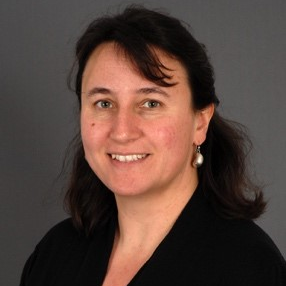Mineralization of Carbonates
A special issue of Crystals (ISSN 2073-4352). This special issue belongs to the section "Mineralogical Crystallography and Biomineralization".
Deadline for manuscript submissions: closed (30 June 2020) | Viewed by 153
Special Issue Editors
Interests: Mechanisms of carbonate nucleation and growth; Computational simulations; Advanced characterization with microscopy and spectroscopy
Special Issue Information
Dear Colleagues,
Carbonates belong to the most intriguing and versatile classes of materials in nature and technology. Their abundance in shells and exoskeletons, particularly in the marine environment, as well as their excellent preservation in the geological record, illustrates their ecological importance. The role of carbonates as carbon sinks and, hence, as global players in the battle against climate change cannot be overestimated. Furthermore, they enable exciting insights into the history of life on Earth by incorporating and protecting original DNA and protein/peptides, the latter over millions of years. The use of carbonates in industrial products is intensive, with a wide range of applications from wastewater management to building constructions, leading to a multi-billion dollar global market.
Given the overwhelming significance of carbonates, the focus of many academic and industrial scientists on the study of carbonate formation is not surprising.
However, it is puzzling how many fundamental aspects of carbonate nucleation, growth, and structure development still escape us and require intensive research efforts in order to be elucidated. For example, the role of amorphous precursor phases has been highlighted in the past 20 years, indicating that the detailed mechanism of nuclei formation from a solution is still an ongoing field of discussion, where possible classical and non-classical pathways are matters of dispute.
To reflect the state-of-the-art in this exciting field, we invite authors working in this area to contribute to our Special Issue of Crystals on Carbonate Mineralization.
Prof. Dr. Roland Kröger
Dr. Kirsty Penkman
Guest Editors
Manuscript Submission Information
Manuscripts should be submitted online at www.mdpi.com by registering and logging in to this website. Once you are registered, click here to go to the submission form. Manuscripts can be submitted until the deadline. All submissions that pass pre-check are peer-reviewed. Accepted papers will be published continuously in the journal (as soon as accepted) and will be listed together on the special issue website. Research articles, review articles as well as short communications are invited. For planned papers, a title and short abstract (about 100 words) can be sent to the Editorial Office for announcement on this website.
Submitted manuscripts should not have been published previously, nor be under consideration for publication elsewhere (except conference proceedings papers). All manuscripts are thoroughly refereed through a single-blind peer-review process. A guide for authors and other relevant information for submission of manuscripts is available on the Instructions for Authors page. Crystals is an international peer-reviewed open access monthly journal published by MDPI.
Please visit the Instructions for Authors page before submitting a manuscript. The Article Processing Charge (APC) for publication in this open access journal is 2100 CHF (Swiss Francs). Submitted papers should be well formatted and use good English. Authors may use MDPI's English editing service prior to publication or during author revisions.
Keywords
- Mechanisms of carbonate nucleation and growth
- Computational simulations
- Advanced characterization with microscopy and spectroscopy
Benefits of Publishing in a Special Issue
- Ease of navigation: Grouping papers by topic helps scholars navigate broad scope journals more efficiently.
- Greater discoverability: Special Issues support the reach and impact of scientific research. Articles in Special Issues are more discoverable and cited more frequently.
- Expansion of research network: Special Issues facilitate connections among authors, fostering scientific collaborations.
- External promotion: Articles in Special Issues are often promoted through the journal's social media, increasing their visibility.
- e-Book format: Special Issues with more than 10 articles can be published as dedicated e-books, ensuring wide and rapid dissemination.
Further information on MDPI's Special Issue polices can be found here.






